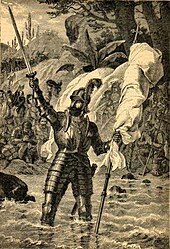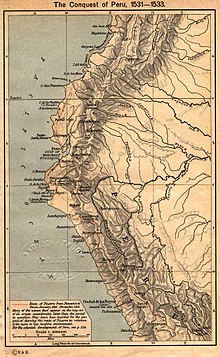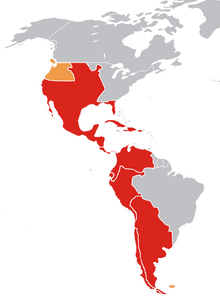Make sure to check the pages attached ====>
esta blog familiar escrito por Monica Oropeza de Coles
OROPESA CASTLE
OUR OROPEZA FAMILY
(Oct 2014)
(Oct 2014)
OROPEZA FAMILY FROM BOLIVIA
(aprox. 1965)




The Constitution of 1880
Click here for source (wikipedia) of History inserted below:
(aprox. 1965)




Bolivia Constitutional History
http://www.constitutionnet.org/country/constitutional-history-bolivia
Constitutional history and development
The 1825 Constitution
Bolivia’s constitutional history can be traced back to the first Constituent Assembly that founded Bolivia in 1825 and wrote its first constitution. The 1825 constitution established a centralized government with executive, legislative, and judicial branches based on the United States model. The Constitution also borrowed a few premises from the French Republic, reflected in a charter that adopted liberal and representative democracy, and granting the congress autonomy and policy-making prerogatives. This constitution, however, was never adopted.
Followed by the 1826 Constitution, 1831 Constitution and the 1836 Constitution of the Peru Bolivian Confederation, the Constitutional revisions between 1839 and 1880.The Constitution of 1880
Following the defeat of Bolivia by Chile in the War of the Pacific from 1879 to1880, a new constitution - Bolivia’s most durable constitution was adopted. Key features of this constitution were the reinforcement and full adoption of bicameralism and the legislature becoming the centre for political debate. During this period, Bolivia achieved a functioning constitutional order complete with political parties, interest groups, and an active legislature and became the model for democracy as congressional oversight over executive behaviour were introduced and institutionalised by law in 1884.
Content from ConstitutionNet.org.Find the full article here:http://www.constitutionnet.org/country/constitutional-history-bolivia
Followed again by the Constitutional Reforms of 1935 and 1947, the 1952 Revolution and the 1961 Constitution, the 1967 Constitution, the 1994 Constitutional Amendments, the 2006 Constitutional Process and the 2009 Constitution.
Content from ConstitutionNet.org.Find the full article here:http://www.constitutionnet.org/country/constitutional-history-bolivia
Content from ConstitutionNet.org.Find the full article here:http://www.constitutionnet.org/country/constitutional-history-bolivia
Content from ConstitutionNet.org.Find the full article here:http://www.constitutionnet.org/country/constitutional-history-bolivia
Content from ConstitutionNet.org.Find the full article here:http://www.constitutionnet.org/country/constitutional-history-bolivia
Content from ConstitutionNet.org.Find the full article here:http://www.constitutionnet.org/country/constitutional-history-bolivia
Content from ConstitutionNet.org.Find the full article here:http://www.constitutionnet.org/country/constitutional-history-bolivia
Content from ConstitutionNet.org.Find the full article here:http://www.constitutionnet.org/country/constitutional-history-bolivia
Content from ConstitutionNet.org.Find the full article here:http://www.constitutionnet.org/country/constitutional-history-bolivia
Content from ConstitutionNet.org.Find the full article here:http://www.constitutionnet.org/country/constitutional-history-bolivia
Content from ConstitutionNet.org.Find the full article here:http://www.constitutionnet.org/country/constitutional-history-bolivia
Content from ConstitutionNet.org.Find the full article here:http://www.constitutionnet.org/country/constitutional-history-bolivia
History
Crown of Castile
The Crown of Castile was a medieval state in the Iberian Peninsula that formed in 1230 as a result of the third and definitive union of the crowns and, some decades later, the parliaments of the kingdoms of Castile and León upon the accession of the then Castilian king, Ferdinand III, to the vacant Leonese throne. It continued to exist as a separate entity after the personal union in 1469 of the crowns of Castile and Aragon with the marriage of the Catholic Monarchs up to the dynastic union occasioned by the succession of Charles I of Spain, the Habsburg heir to both crowns in 1516.
The Indies, Islands and Mainland of the Ocean Sea were also a part of the Crown of Castile when transformed from lordships to Kingdoms of the heirs of Castile in 1506, with the treaty of Villafáfila, and upon the death of Ferdinand the Catholic.
The title of "King of Castile" remained in use by the Habsburg rulers during the 16th and 17th centuries. Charles I was King of Aragon, Majorca, Valencia, and Sicily, and Count of Barcelona, Roussillon and Cerdagne, as well as King of Castile and León, 1516–1556.
Peru
Main article: Spanish conquest of the Inca Empire
In 1532 at the Battle of Cajamarca a group of Spaniards under Francisco Pizarro and their indigenous Andean Indian auxiliaries native allies ambushed and captured the Emperor Atahualpa of the Inca Empire. It was the first step in a long campaign that took decades of fighting to subdue the mightiest empire in the Americas. In the following years Spain extended its rule over the Empire of the Inca civilization.
The Spanish took advantage of a recent civil war between the factions of the two brothers Emperor Atahualpa and Huáscar, and the enmity of indigenous nations the Incas had subjugated, such as theHuancas, Chachapoyas, and Cañaris. In the following years the conquistadors and indigenous allies extended control over Greater Andes Region. The Viceroyalty of Perú was established in 1542. The last Inca stronghold was conquered by the Spanish in 1572.
Viceroyalty of Peru
The Viceroyalty of Peru (Spanish: Virreinato del Perú) was a Spanish colonial administrative district, created in 1542, that originally contained most of Spanish-ruled South America, governed from the capital of Lima. The Viceroyalty of Peru was one of the two Spanish Viceroyalties in the Americas from the sixteenth to the eighteenth centuries.
The Spanish did not resist the Portuguese expansion of Brazil across the meridian established by the Treaty of Tordesillas. The treaty was rendered meaningless between 1580 and 1640 while Spain controlled Portugal. The creation during the 18th century of Viceroyalties of New Granada and Rio de la Plata (at the expense of Peru's territory) reduced the importance of Lima and shifted the lucrative Andean trade to Buenos Aires, while the fall of the mining and textile production accelerated the progressive decay of the Viceroyalty of Peru. Eventually, the viceroyalty would dissolve, as with much of the Spanish empire, when challenged by national independence movements at the beginning of the nineteenth century. These movements led to the formation of the modern-day countries of Peru, Chile, Colombia, Panama, Ecuador, Bolivia, Paraguay, Uruguay, Argentina, Guyana and Trinidad and Tobago in the territories that at one point or another had constituted the Viceroyalty of Peru.
Exploration and settlement (1542–1643)
Viceroyalty of Peru/Virreinato del Perú (after 1542)
After the Spanish conquest of Peru (1532–37), the first Audiencia was constituted by Lope García de Castro (1516 - 8 January 1576), a Spanish colonial administrator that served as a member of the Council of the Indies and of the Audiencias of Panama and Lima. From September 2, 1564 to November 26, 1569 he was interim viceroy of Peru. In 1542, the Spanish created the Viceroyalty of New Castile, that shortly afterwards would be called the Viceroyalty of Peru. In 1544, Holy Roman Emperor Charles V (King Charles I of Spain) named Blasco Núñez Vela Peru's first viceroy, but the viceroyalty was not organized until the arrival of Viceroy Francisco Álvarez de Toledo. Toledo made an extensive tour of inspection of the colony.
Francisco de Toledo, "one of the great administrators of human times",established the Inquisition and promulgated laws that applied to both Indians and Spanish alike, breaking the power of the encomenderos and reducing the old system of mita, or forced native labor. He improved the safety in the viceroyalty with fortifications, bridges and la Armada del Mar del Sur (the Southern Fleet) against the pirates. Francisco de Toledo also ended the indigenous Neo-Inca State in Vilcabamba, executing the Inca Túpac Amaru, and promoted economic development from the commercial monopoly and the mineral extraction, mainly, from silver mines of Potosí.
Río de la Plata and Paraguay
European explorers arrived in Río de la Plata in 1516. Their first Spanish settlement in this zone was the Fort of Sancti Spiritu established in 1527 next to the Paraná River. Buenos Aires, a permanent colony, was established in 1536 and in 1537 Asunción was established in the area that is now Paraguay. Buenos Aires suffered attacks by the indigenous peoples that forced the settlers away, and in 1541 the site was abandoned. A second (and permanent) settlement was established in 1580 by Juan de Garay, who arrived by sailing down the Paraná River from Asunción (now the capital of Paraguay). He dubbed the settlement "Santísima Trinidad" and its port became "Puerto de Santa María de los Buenos Aires." The city came to be the head of the Governorate of the Río de la Plata and in 1776 elevated to be the capital of the new Viceroyalty of the Río de la Plata.
New Granada
Main article: New Kingdom of Granada
Between 1537 and 1543, six Spanish expeditions entered highland Colombia, conquered the Muisca Indians, and set up the New Kingdom of Granada (Spanish: Nuevo Reino de Granada). Gonzalo Jiménez de Quesada was the leading conquistador. It was governed by the president of the Audiencia of Bogotá, and comprised an area corresponding mainly to modern-day Colombia and parts of Venezuela. The conquistadors originally organized it as a captaincy general within the Viceroyalty of Peru. The crown established the audiencia in 1549. Ultimately the kingdom became part of the Viceroyalty of New Granada first in 1717 and permanently in 1739. After several attempts to set up independent states in the 1810s, the kingdom and the viceroyalty ceased to exist altogether in 1819 with the establishment of Gran Colombia.
Governing
Main articles: Viceroyalty of New Spain, Viceroyalty of Peru, and Intendant § The Spanish Monarchy
Spain's administration of its colonies in the Americas was divided into the Viceroyalty of New Spain 1535 (capital, México City), and the Viceroyalty of Peru 1542 (capital, Lima). In the 18th century the additional Viceroyalty of New Granada 1717 (capital, Bogotá), and Viceroyalty of Rio de la Plata 1776 (capital, Buenos Aires) were established from portions of the Viceroyalty of Peru.
This evolved from the Council of the Indies and Viceroyalties into an Intendant system, raise more revenue and promote greater efficiency.
19th century
Main article: Spanish American wars of independence
During the Napoleonic Peninsular War in Europe between France and Spain, assemblies called juntas were established to rule in the name of Ferdinand VII of Spain. The Libertadores (Spanish and Portuguese for "Liberators") were the principal leaders of the Spanish American wars of independence. They were predominantly criollos (Americas-born people of European ancestry, mostly Spanish or Portuguese), bourgeois and influenced by liberalism and in some cases with military training in the mother country.
In 1809 the first declarations of independence from Spanish rule occurred in the Viceroyalty of New Granada. The first two were in present-day Bolivia at Sucre (May 25), and La Paz (July 16); and the third in present-day Ecuador at Quito (August 10). In 1810 Mexico declared independence, with the Mexican War of Independence following for over a decade. In 1821 Treaty of Córdoba established Mexican independence from Spain and concluded the War. The Plan of Iguala was part of the peace treaty to establish a constitutional foundation for an independent Mexico.
These began a movement for colonial independence that spread to Spain's other colonies in the Americas. The ideas from the Frenchand the American Revolution influenced the efforts. All of the colonies, except Cuba and Puerto Rico, attained independence by the 1820s. The British Empire offered support, wanting to end the Spanish monopoly on trade with its colonies in the Americas.
In 1898, the United States won victory in the Spanish–American War from Spain, ending the Spanish colonial era. Spanish possession and rule of its remaining colonies in the Americas ended in that year with its sovereignty transferred to the United States. The United States took occupation of Cuba, the Philippines, and Puerto Rico. Puerto Rico continues to be a possession of the United States, now officially continues as a self-governing unincorporated territory.


















